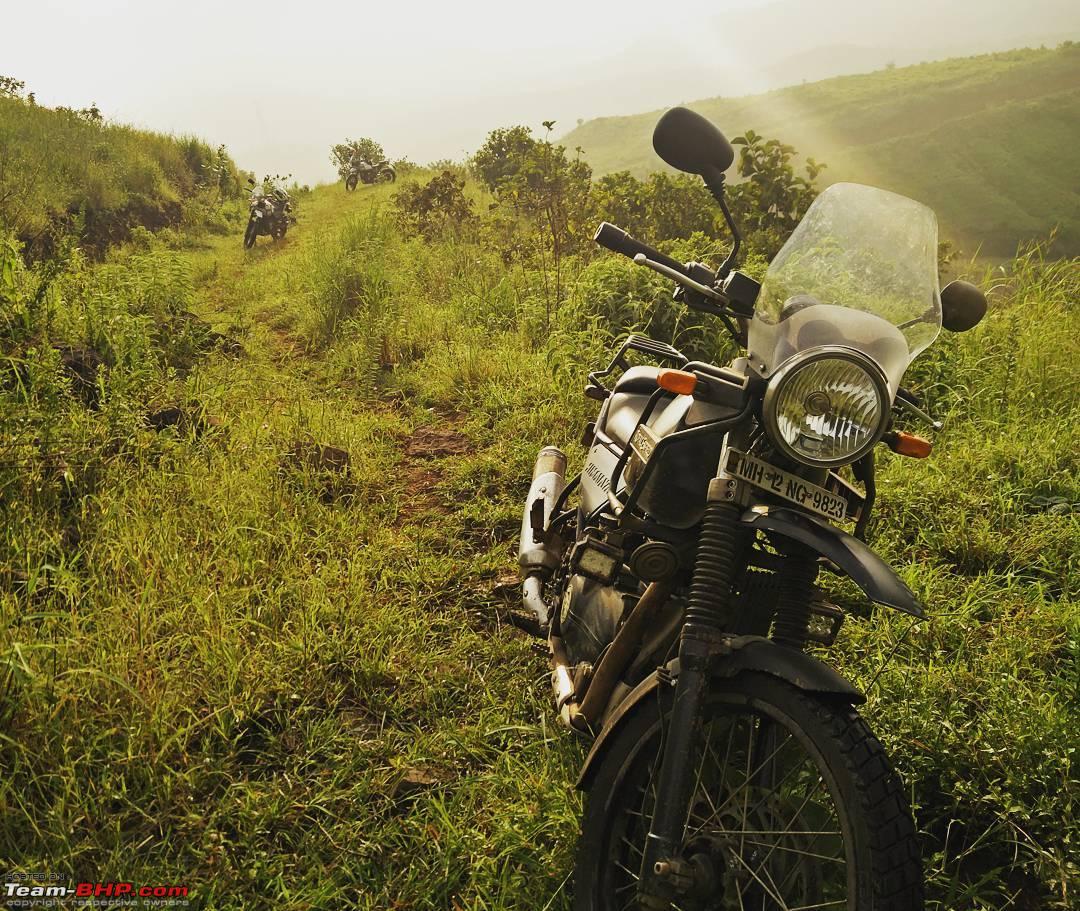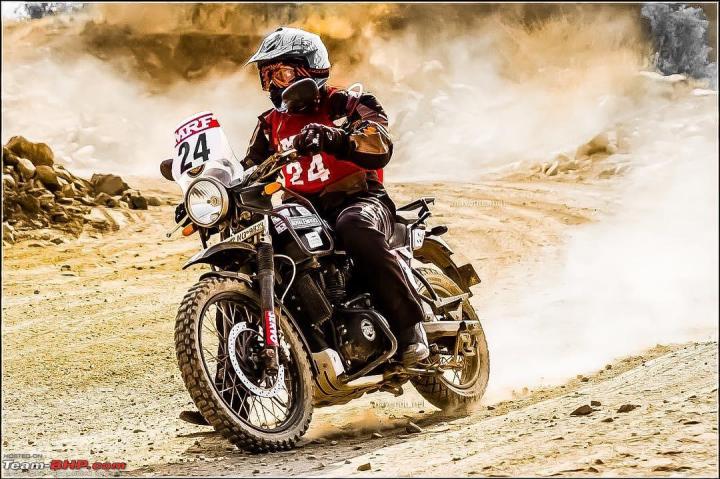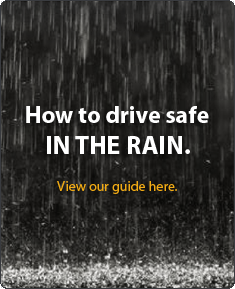News
5 years with a RE Himalayan | Nightmare to a dream come true
The message was clear and it was pretty much the bike I was looking for.
BHPian ambarkhan recently shared this with other enthusiasts.
WTH: Why the Himalayan
In 2015, my 2011 Pulsar 180 started to show its age. It was ridden enthusiastically and worshipped when it came to maintenance. It was around 70,000 kms on the odometer and one thing was clear - either I have to sell it or if I want to keep it always, get another motorcycle and start preserving this.
I was pretty clear about what I wanted from a new bike. I wanted something which can be used for long highway runs (800-1000kms in a day). Being taller than 6 feet, ergonomics were a priority (this is where the KTM's got cancelled). The motorcycle should not be 500cc (nothing more than that was available in 3 Lacs budget).
Essentially there were two options:
- Mahindra Mojo: was eliminated because of a lack of service network.
- Royal Enfield 500s: To be honest, the looks of Desert Storm seduced me, way before I was planning to buy a bike. But every ride just made me realise the value of my Pulsar in terms of performance. The vibrations, poor brakes, and lack of basic features like a fuel gauge just cancelled the deal for me.
I was following the leaks of Himalayan and decided to wait for its launch. I had ridden my friend's Impulse and was expecting Himalayan's ride quality to be on a similar level. A few months later, Royal Enfield announced the Himalayan launch event in the last week of March 2019. By this time, I was pretty sure that I would book the bike on the launch day if I like it.
Royal Enfield did pull off a great launch event. The message was clear and it was pretty much the bike I was looking for.
During the launch event, someone from Royal Enfield shared that they do have a fuel-injected motorcycle ready and they'll release it once BS4 is mandated by the law nad they'll release the bike. It made me postpone the purchase to once the new model is released.
A month later, a colleague asked me if I can join him in picking up his new Classic 350 and I said yes. I saw the Himalayan there and asked for a test drive. The bike was bang on for my requirements. On enquiring about the waiting time, the showroom guys informed me it was 3 months. I was still not sure if I want to wait for an electronically fuel-injected version. I asked the booking amount. They said its a refundable Rs. 5000. I booked it immediately with the thought of making the final decision in the next couple of months.
Post Booking Dilemma
By June 2016, stories of issues in the Himalayan were started to surface online. I had never owned a Royal Enfiled in the past, but for someone who doesn't own an Enfield, the image is the bikes last long forever. I considered the reports to be unique cases and proceeded with the delivery.
Delivery and Break-in
The Delivery was without any issues. On a fine August morning, they delivered the motorcycle.
Break-in a new vehicle can be a boring thing. Luckily, staying in Pune means that you can do a proper break-in on the curves nearby without getting bored. In a couple of months, the break-in period was finished and that means I can start planning long trips.
First few highway trips
In November, I was planning to visit my home town (Pune to Bhopal is approx 850 km one way). Generally, I use public transport, but one day before my trip I cancelled my ticket and planned to ride solo to Bhopal. I had chosen the Pune-Ahmednagar-Bhopal.
Ahmednagar Bypass used to be in very bad shape those days and that's where the bike shined. I was able to keep the pace and everyone else on road was surprised that how easily I was able to keep my pace. This is where the long-travel suspension shines.

Once I reached home in Bhopal and knocked on the door and told my parents that I have come on the bike they laughed, even though I was in riding gears.
Even the return journey was uneventful and I had immense confidence on the bike.
Initial Minor Issues
Stiff handlebar and alignment issues
As soon as I started to take her off-road the issues started.
The first issue I faced on the Himalayan was the bike getting pulled in one direction. This was due to rusted T-Stem and cone set bearings. But the service centre guys didn't even think of that, I don't blame them as the bike was a couple of months old then. No one expects to catch rust on the greased parts in a couple of months, not even Royal Enfield. All they thought was misaligned forks and it took me around 2 weeks to get this in a usable condition. It was never fully fixed and requires frequent greasing of the T-Stem.
During Rider Mania 2016 Goa, Royal Enfield had brought their best mechanics to fix the problems of Himalayan. The skilled hands of engineers were able to solve this problem by 90%. They said there is a minor bend in the chassis, that is causing it and nothing can be done.
The mounts in T-Stem for forks are made of aluminium. It makes a lot of a difference if you torque them according to spec in the crisis cross pattern. I had not seen any service centre use a torque wrench, but from this point that all critical bolts on my bike are getting tight as per the torque specs.
For the next two years, the cone-set bearings were replaced as goodwill on almost every service centre visit. Eventually, they did start applying marine grease instead of regular over the shelf grease for Cone set bearings. They spray painted the T-Steam and eventually added a protective cap for the cone set. This is something which is present in almost all bikes including the 100cc commuter.
Hard Clutch
The bike had a hard clutch and it is present in almost all bikes. Royal Enfield did offer the replacement clutch kit but it didn't solve much. They eventually found the problem as the clutch cable bracket design on the clutch case. They eventually changed it on all bikes.
Low life of rear tyre
To be honest, no one knew at the launch of the Himalayan about dual sports. Their maintenance, how they behave, their limits. Royal Enfiled advertised it as one bike you'll ever need which for sure it was not. People were not expecting the rear tyres to go bald very soon. My first rear was 80% used in approx 4500 km, which was very less compared to the regular tyre life on Indian motorcycles. The stock CEAT gripper was probably the first dual sport tyre coming as OEM fitment in India (in a mass-market product). No one knew in the initial years what should be the expected tyre life and we get free replacement tyres as well under warranty. Later we all get accustomed to that kind of tyre usage.

Within 6-9 months, we knew that this is going to take a serious TLC, but we were happy because of the capabilities of the bikes. I'll move on to the off-road experience before coming to the serious issue we were about to experience.

Continue reading the ownership experience and ambarkhan's thoughts on his Himalayan. Check out BHPian comments for more insights and information.


















